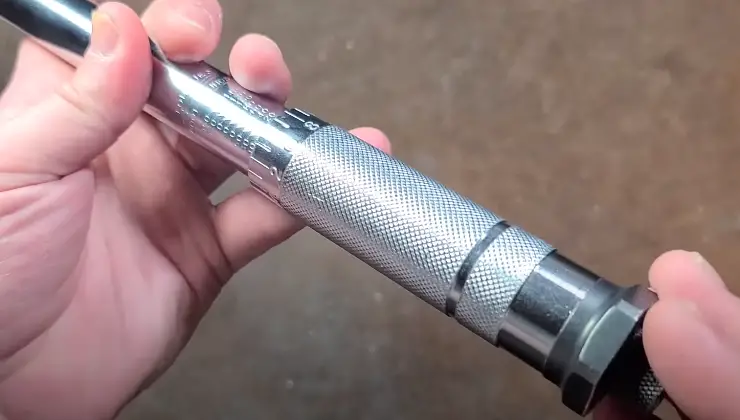A torque wrench is a tool that helps tighten nuts and bolts accurately. The Pittsburgh torque wrench is a reliable and affordable option that is easy to use. If you’re looking to use a Pittsburgh torque wrench for the first time or want to learn more about using it correctly, then you’re in the right place. In this article, we’ll take a closer look at how to use Pittsburgh torque wrench.
Contents
What is a Pittsburgh Torque Wrench?
A Pittsburgh torque wrench is a type of wrench that is used to tighten bolts and nuts with a specific level of torque. The wrench has a mechanism that allows you to set the desired torque level, and it will click when the correct torque is reached. This makes it an essential tool for mechanics, engineers, and DIY enthusiasts who need to ensure that bolts and nuts are tightened to a specific level.
Types of Pittsburgh Torque Wrenches
Pittsburgh is a brand of torque wrenches that offers various types of torque wrenches for different applications. Here are some of the common types of Pittsburgh torque wrenches:
Click-type torque wrench: This is the most common type of Pittsburgh torque wrench. It has a ratcheting mechanism that clicks when the desired torque value is reached. This type of wrench is easy to use and provides accurate torque values.
Beam-type torque wrench: This type of Pittsburgh torque wrench uses a calibrated beam to indicate the torque value. It is a simple and durable design but requires some practice to read the scale accurately.
Digital torque wrench: This type of Pittsburgh torque wrench has a digital display that shows the torque value. It is easy to read and offers precise torque values. However, it is more expensive than other types of torque wrenches.
Dial-type torque wrench: This type of Pittsburgh torque wrench uses a dial gauge to display the torque value. It is accurate and easy to read, but it is more expensive than the beam-type torque wrench.
Micrometer torque wrench: This type of Pittsburgh torque wrench has a micrometer scale that provides precise torque values. It is commonly used in precision applications such as the automotive industry.
Hydraulic torque wrench: This type of Pittsburgh torque wrench uses hydraulic pressure to apply torque. It is commonly used in heavy-duty applications such as industrial machinery.
How to Use Pittsburgh Torque Wrench
The use of Pittsburgh torque wrench is easy. Here are the steps to use a Pittsburgh torque wrench:
Step 1: Set the Torque Level
The first step in using a Pittsburgh torque wrench is to set the torque level. You can do this by adjusting the wrench’s handle or rotating the knob at the end of the wrench. Make sure to set the torque level to the desired level specified in your project’s manual.
Step 2: Place the Wrench on the Nut/Bolt
Next, place the torque wrench on the nut or bolt you want to tighten. Make sure that the wrench is sitting square on the nut or bolt head, and the handle is pointing in the direction of the force you want to apply.
Step 3: Apply Force to the Wrench
Now, apply force to the wrench by pulling on the handle. Make sure to apply the force smoothly and steadily until you hear the wrench click. This means that the desired torque level has been reached.
Step 4: Check the Torque
After the wrench clicks, check the torque level on the wrench’s handle or display. If it matches the desired torque level, you’re done. If it doesn’t, adjust the torque level and repeat the process.
Tips for Using a Pittsburgh Torque Wrench
- Always read the manual before using a Pittsburgh torque wrench.
- Keep the wrench clean and dry to ensure accurate readings.
- Use the right size wrench for the job.
- Calibrate your torque wrench regularly to ensure accuracy.
- Store the wrench in a safe and dry place.
Frequently Asked Questions
Q: What is the difference between a beam type and click type torque wrench?
A: The beam type requires you to visually check the torque level, while the click type clicks when the correct torque level is reached.
Q: How accurate are Pittsburgh torque wrenches?
A: Pittsburgh torque wrenches are generally accurate to within +/- 4%.
Q: Can I use a Pittsburgh torque wrench for both tightening and loosening bolts/nuts?
A: Yes, you can use a Pittsburgh torque wrench for both tightening and loosening bolts/nuts.
Q: How do I calibrate my Pittsburgh torque wrench?
A: To calibrate your Pittsburgh torque wrench, you can send it to a professional calibration service or use a calibration tool. Refer to the wrench’s manual for specific instructions on calibration.
Q: Can I use a Pittsburgh torque wrench on non-threaded fasteners?
A: No, Pittsburgh torque wrenches are designed specifically for threaded fasteners and should not be used on non-threaded fasteners.
Q: How do I know if my Pittsburgh torque wrench is out of calibration?
A: You can check if your Pittsburgh torque wrench is out of calibration by comparing it to a known calibrated wrench or sending it for professional calibration.
Conclusion
A Pittsburgh torque wrench is an essential tool for anyone who needs to tighten nuts and bolts to a specific level of torque. By following the steps outlined above on how to use pittsburgh torque wrench and keeping the tips in mind, you can ensure that you’re using your Pittsburgh torque wrench correctly and safely.
